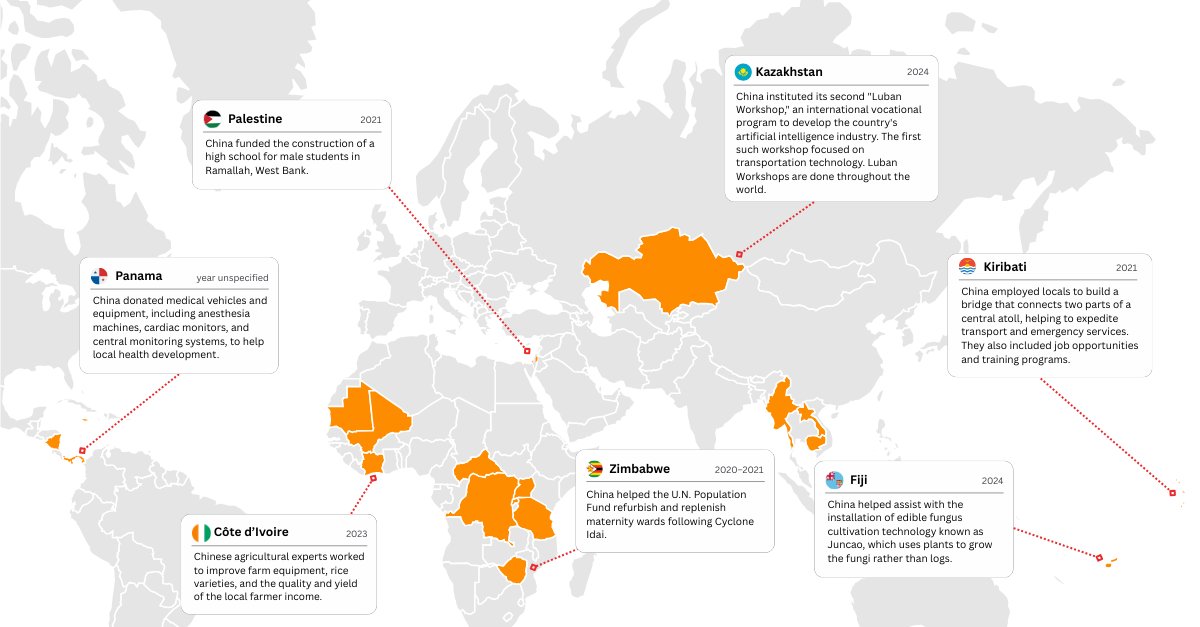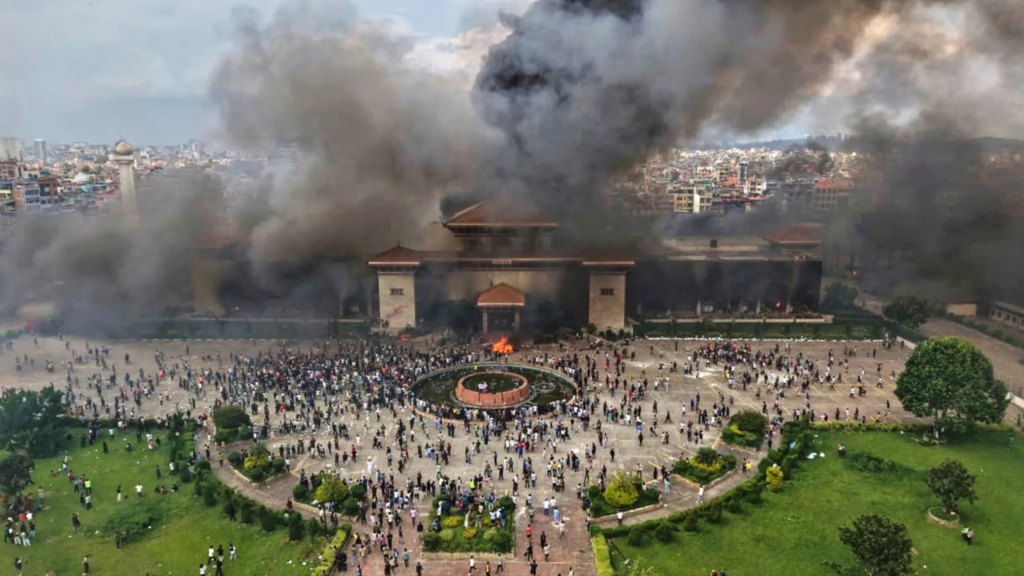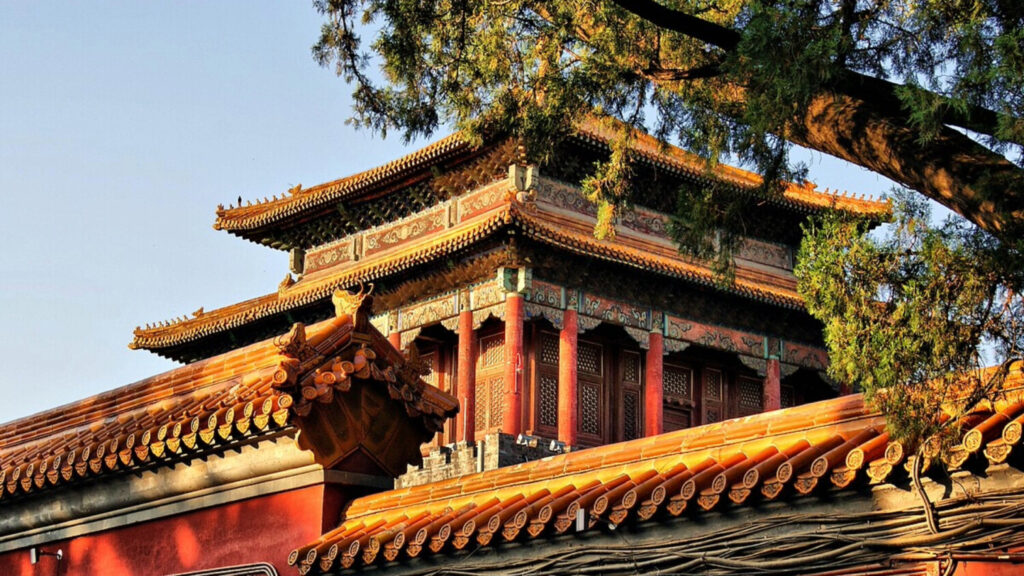China’s Strategic Shift to “Small and Beautiful” (Xiao er Mei) Projects
China’s “small and beautiful” projects mark a new phase in its global strategy, shifting from mega BRI infrastructure to targeted, community-based development that deepens influence across the Global South.
At a high-level meeting on the Global Development Initiative held alongside the 80th session of the United Nations General Assembly, Chinese Premier Li Qiang announced that China would launch 2,000 new “small and beautiful” (xiao er mei) livelihood projects across developing countries within the next five years (Xinhua Net, 2025). He further outlined plans for 200 marine cooperation projects aimed at supporting small island developing states in strengthening their sustainable-development capacity. Framing these initiatives as evidence of China’s role as a “responsible major developing country,” Li’s remarks underscored Beijing’s intention to combine development diplomacy with ecological and social outreach.
China’s “small and beautiful” (xiao er mei) projects (CIDCA, 2025) represent a strategic shift in its international development and foreign aid outreach particularly under initiatives like Belt and Road Initiative (BRI), Global Development Initiative (GDI), and Forum on China-Africa Cooperation (FOCAC), signalling Beijing’s intent to pivot from large-scale infrastructure financing toward more targeted, community-level engagement.
The concept of “small and beautiful” projects (CIDCA, 2025) has featured prominently in Chinese policy discourse since 2019. It emerged in response to mounting criticism over the debt burdens and environmental consequences associated with China’s earlier mega-infrastructure ventures. By prioritising smaller, community-oriented initiatives. If executed correctly then it has the potential to improve foreign sentiments towards China previously much affected by the debt-inducing disadvantages of large BRI projects.
At the Third Belt and Road Forum for International Cooperation in October 2023 (The State Council, The People’s Republic of China, 2023), Chinese President Xi Jinping announced that, “China will promote both signature projects and small and beautiful livelihood programs. China’s exhibitory tone (CIDCA, 2025) on small and beautiful projects, promoted as efforts to enhance sustainability and improve lives is said to be aligned with local needs, diversified participation, and green and low carbon development and aimed at meeting the development needs of the vast developing countries. The move is focused on profitability and scalability to attract private investment, reduce state funding and strategically foster soft connectivity.
China’s newly modelled strategic outreach strategy constitutes several initiatives like: a) deployment of Chinese medical teams (Global Times, 2023) in underdeveloped countries providing healthcare training and services. (China National Engineering Research Centre of Juncao Technology) b) the promotion of Juncao cultivation which is an economically productive grass technology pioneered by Chinese researchers; c) the establishment of Luban Workshops offering vocational training in engineering and information technology (Global Times, 2024); d) a range of green energy and water projects across Africa (Dialogue Earth, 2024); and e) the expansion of green financing mechanisms to support economic transformation (CIDCA, 2025). Beijing’s strategic shift to small but beautiful projects under BRI offers it an opportunity to deepen influence in the Global South through a decentralized cost-effective model.
China’s pivot toward “small and beautiful” projects comes at a moment of economic slowdown and intensifying competition in the Pacific. If effectively implemented, this approach could provide Beijing with a relative advantage over the United States, whose regional engagement has remained primarily transactional and trade-oriented. In May 2022, China reaffirmed its commitment to strengthening comprehensive partnerships with Pacific Island nations (Ministry of Foreign Affairs, PRC, 2022). Later, in March 2025, CIDCA Director-General Li Ming emphasised that Beijing’s development approach now advances both major landmark projects and “small yet smart” (xiao er mei) livelihood initiatives in tandem—each tailored to the specific needs of Global South partners. The broader strategic implications of this shift across the Asia-Pacific remain under review, but the move underscores China’s growing adaptability in aligning foreign aid with geopolitical priorities.

Source: Devex, 2025
The image above maps some of China’s ‘small and beautiful’ projects in developing countries.
With the dismantling of USAID, China’s ‘small and beautiful’ project campaign under the BRI is poised to find relevance. In February 2025, China’s principal foreign aid agency, the China International Development Cooperation Agency (CIDCA), released a report (CIDCA, 2025) on small and beautiful development, highlighting its importance to China’s long-term foreign aid approach and announcing that the country will “scale up” the frequency of these projects. Following the cessation of USAID funding, China pledged $4.4 million to the Cambodian Mine Action Centre (Radio Free Asia, 2025), or CMAC, which is more than double the $2 million previously provided by the US.
These projects are becoming the cornerstone of its international development cooperation programme. In March, the International Federation of Red Cross and Red Crescent Societies, or IFRC (IFRC, 2024), announced a partnership with CIDCA establishing a partnership to enhance humanitarian efforts in regions including the Middle East and Africa.
In South Asia, China’s development assistance to Nepal has expanded markedly over the past decade, spanning grants, concessional loans, and infrastructure projects. In September 2025, Kathmandu accepted $20 million in Chinese grant assistance for new development programmes, alongside an additional $4.13 million for a separate proposed initiative (Deccan Herald, 2024). In parallel, China and Myanmar signed an agreement (Global Times, 2025) to launch 14 new “small and beautiful” projects covering agriculture, environmental protection, science and technology, culture, education, and disaster prevention. These partnerships exemplify Beijing’s deepening engagement with South and Southeast Asian nations through targeted, low-cost, high-visibility development initiatives.
China’s much talked about small and beautiful projects might sound promising but must ensure long term viability taking into consideration host countries’ plans, without overshadowing local priorities, unlike BRI.
Bibliography
Xinhuanet, ‘Urgent: China pledges 2,000 more livelihood projects in developing countries in 5 years –Chinese premier’, September 2025, URL: https://english.news.cn/20250924/12d0b15ac9084b2fb6737d7ea2b7dcce/c.html
CIDCA, ‘International Development Cooperation: China’s Practice: “Small and Beautiful” Projects’, February 2025, URL: http://en.cidca.gov.cn/pdf/InternationalDevelopmentCooperationChinasPracticeSmallandBeautifulProjects.pdf
The State Council, The People’s Republic of China, 2023, ‘Full text of Xi Jinping’s keynote speech at 3rd Belt and Road Forum for Int’l Cooperation’, October, 2023, URL: Full text of Xi Jinping’s keynote speech at 3rd Belt and Road Forum for Int’l Cooperation
Global Times, ‘60 years on, Chinese medical team carries forward China-Africa friendship’, December 2023, URL: 60 years on, Chinese medical team carries forward China-Africa friendship – Global Times
China National Engineering Research Centre of Juncao Technology, ‘Juncao Technology’, URL: China National Engineering Research Centre of Juncao Technology – ruralsolutionsportal
Global Times, ‘How does Luban Workshop win the hearts of the Global South?: Global Times editorial’ August 2024, URL: How does Luban Workshop win the hearts of the Global South?: Global Times editorial – Global Times
Dialogue Earth, ‘Roundtable: What the China-Africa forum means for clean energy in Africa’, October 2024, URL: Roundtable: What the China-Africa forum means for clean energy in Africa
Wang Yi: The Comprehensive Strategic Partnership between China and Pacific Island Countries Will Surely Achieve Steady and Sustained Growth, Ministry of Foreign Affairs, Republic of China, May 2022, URL: Wang Yi: The Comprehensive Strategic Partnership between China and Pacific Island Countries Will Surely Achieve Steady and Sustained Growth_Ministry of Foreign Affairs of the People’s Republic of China
Radio Free Asia, ‘Beijing announces $4.4 million in funding for landmine clearance in Cambodia’, February 2025, URL: Beijing announces $4.4 million in funding for landmine clearance in Cambodia
The International Federation of Red Cross and Red Crescent Societies (IFRC), ‘IFRC and China International Development Cooperation Agency sign landmark agreement’, July 2024,URL: IFRC and China International Development Cooperation Agency sign landmark agreement | IFRC
Nepal govt accepts $20 million grant assistance from China,’ Nepal govt accepts $20 million grant assistance from China’, Deccan Herald, December 2024,URL: Nepal govt accepts $20 million grant assistance from China
Devex, ‘China’s big development projects are getting smaller’, April 2025, URL: China’s big development projects are getting smaller | Devex
Global Times, ‘ China, Myanmar sign cooperation agreement for 2025 LMC Special Fund,’ August 6, 2025, URL: China, Myanmar sign cooperation agreement for 2025 LMC Special Fund – Global Times



